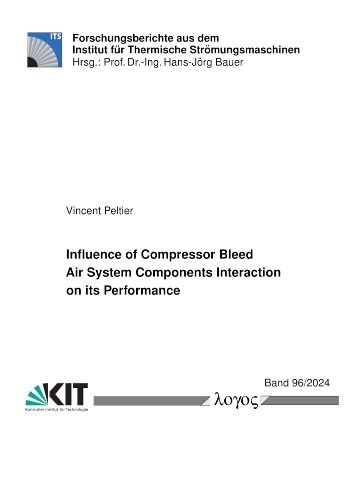Readings Newsletter
Become a Readings Member to make your shopping experience even easier.
Sign in or sign up for free!
You’re not far away from qualifying for FREE standard shipping within Australia
You’ve qualified for FREE standard shipping within Australia
The cart is loading…






The compressor bleed air system is part of the secondary air system of an aero-engine or a stationary gas turbine. It extracts air out of the compressor through slots or holes placed in the casing or shaft of the engine. Typically, the bleeding air is collected through a circumferential manifold and is then fed into a number of exit tubes guiding the air to different applications. Compressor bleed air systems are generally designed according to two rules: minimise the total pressure loss in the system in order to locate the off-take as far upstream in the compressor as possible, and at the same time minimise the local influence of the bleed air extraction on the compressor's operating range. Due to assembly, weight, and cost constraints, the complete compressor bleed air system must remain as compact as possible. It requires placing the components close to each other, which in turn implies strong interactions between the components. The choice of an exit tube configuration, for instance, is crucial as it affects the manifold flow losses, the bleeding uniformity and the bleed air system costs.
In the present work, the effects of the interaction between commonly used compressor bleed air system components have been investigated. The cross influence of these components is analysed computationally and experimentally based on total pressure loss and bleed uniformity. In addition, these results are compared with 1D network assumptions, widely used in industry, in order to improve engine design modelling.
$9.00 standard shipping within Australia
FREE standard shipping within Australia for orders over $100.00
Express & International shipping calculated at checkout
The compressor bleed air system is part of the secondary air system of an aero-engine or a stationary gas turbine. It extracts air out of the compressor through slots or holes placed in the casing or shaft of the engine. Typically, the bleeding air is collected through a circumferential manifold and is then fed into a number of exit tubes guiding the air to different applications. Compressor bleed air systems are generally designed according to two rules: minimise the total pressure loss in the system in order to locate the off-take as far upstream in the compressor as possible, and at the same time minimise the local influence of the bleed air extraction on the compressor's operating range. Due to assembly, weight, and cost constraints, the complete compressor bleed air system must remain as compact as possible. It requires placing the components close to each other, which in turn implies strong interactions between the components. The choice of an exit tube configuration, for instance, is crucial as it affects the manifold flow losses, the bleeding uniformity and the bleed air system costs.
In the present work, the effects of the interaction between commonly used compressor bleed air system components have been investigated. The cross influence of these components is analysed computationally and experimentally based on total pressure loss and bleed uniformity. In addition, these results are compared with 1D network assumptions, widely used in industry, in order to improve engine design modelling.